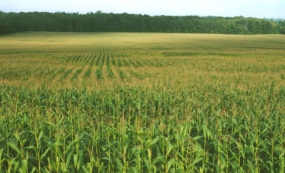Sustain Ontario: Will Party Leaders Support Food and Farming in Ontario?
Will Party Leaders Support Food and Farming in Ontario?
Provincial cross-sectoral alliance asks political leaders about how they will commit to strengthening Ontario’s food and farming system
Toronto, ON - Last Friday, Sustain Ontario sent 11 questions to provincial party leaders, seeking their commitments to healthy food and…
ContinueAdded by OntAG Admin on May 27, 2014 at 5:06am — No Comments
New Blog: U of Guelph OVC Vet Students Share Experiences Working With Animals In Local Clinics - Externships.
Join our DVM students as they blog all Externship long.
University of Guelph News
Diagnostics, clinical skills, problem solving, and working with clients are all critical pieces in a student veterinarian’s education. Hands-on opportunities are invaluable.
Each summer DVM students from the Ontario Veterinary College (OVC)…
ContinueAdded by OntAG Admin on May 26, 2014 at 5:41am — No Comments
Stay Safe on the Roads While Crops Are Being Planted!
Remember, tractors travel about 30 KPH and if you are driving a vehicle doing 80, 90 or 100 plus KPH coming over the hill or around the bend, you have very little reaction time to prevent a tragedy.
Make sure you have the SMV clearly displayed, and have your lighting and turn signals in place and working. And when possible, pull to the side of the road to let that string of cars behind you pass; impatient drivers cause accidents.
Urban drivers, if you are driving a vehicle on a…
ContinueAdded by OntAG Admin on May 5, 2014 at 8:18am — No Comments
Terry Daynard's Blog: What Corn-Canola Comparisons Tell us about Neonics and Bees – Plenty Actually
Corn-Canola Comparisons: Neonic-Bee Problem Likely Unrelated to Pollen or Soil Residues
ContinueAdded by OntAG Admin on May 2, 2014 at 10:30am — No Comments
Latest Blog Posts
- Using UAVs and the Crop Imagery Data they Collect to Improve Crop Yields and Performance
- How to Use Precision Agriculture Data - Veritas Farm Management & Deveron UAS.
- A&L Laboratories Presentation on Soil Health at the Farms.com Precision Ag Conference.
- Farms.com 20 Years Helping Farmers and Agri Business.
- Farm Show Highlights: Action Trailers Walkaround Video
- Corn Report: Tips To Prepare Farm Machinery For Harvest
- Alpine Agronomy Tips: Liquid Fertilizers Can Increase Soybean Yields.
Most Popular Blog Posts
- Photo: Ontario Farm Fields That Have Only Seen Soybeans &/or Corn from 2011 to 2013
- Graph: Corn Yield Response to Soil N and Soil Health - Ridgetown College Study
- Are those Christmas lights in Ontario? Nope it's a map of corn (red) vs soybean (grn) grown in 2013
- Daynard: Critique of the Ontario Government Document on Bee Health and Use of Neonicotinoid Pesticides
- FCC: Where are Farmland Values Heading?
- OFA: Election Priorities - TOP 4 issues that matter to Ontario farmers
- Farm Show at Western Fair in London. March 7-9, Will Be The Largest Ever. Agriculture Technology, Education, Entertainment.
Monthly Archives
2019
- May (3)
2018
- July (1)
2017
- October (2)
2016
2015
- December (1)
- October (1)
- September (2)
- July (2)
- June (2)
- May (3)
- April (8)
- March (4)
- February (1)
- January (5)
2014
- December (6)
- November (13)
- October (14)
- September (10)
- August (5)
- July (10)
- June (7)
- May (4)
- April (5)
- March (9)
- February (11)
- January (5)
2013
- December (3)
- November (2)
- October (5)
- September (3)
- August (5)
- July (2)
- June (3)
- May (4)
- April (2)
- March (5)
- February (3)
- January (1)
2012
- December (3)
- November (2)
- September (4)
- August (6)
- June (5)
- May (6)
- April (1)
- March (3)
- February (6)
- January (3)
2011
- December (5)
- November (1)
- October (3)
- September (2)
- August (1)
- July (2)
- June (3)
- May (2)
- April (3)
- March (2)
- February (5)
- January (3)
2010
- December (4)
- November (1)
- October (3)
- September (2)
- August (1)
- July (1)
- May (3)
- April (1)
- February (2)
- January (2)
2009
© 2025 Created by Darren Marsland.
Powered by
![]()
